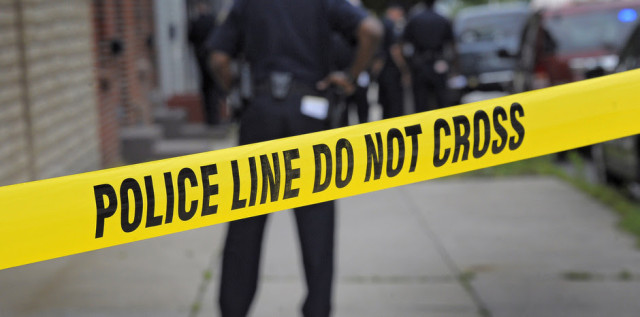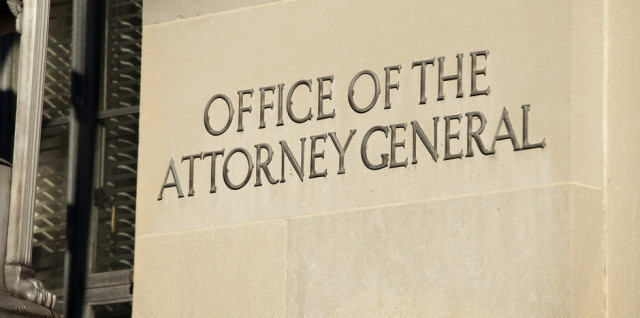Blurred Lines: The Humanitarian Threat to Free Speech by Aaron Tao
“Think of liberalism … as a collection of ideas or principles which go to make up an attitude or ‘habit of mind.’” – Arthur A. Ekirch
In Democracy in America, Alexis de Tocqueville was keen to observe that “once the Americans have taken up an idea, whether it be well or ill founded, nothing is more difficult than to eradicate it from their minds.”
Reflecting upon my experience as a first-generation immigrant who grew up in the United States, I concur with Tocqueville; this inherent feature of the culture and character of the American people holds true even today.
In America, there are no sacred cows, no one is above criticism, and no one has the final say on any issue. It is worth emphasizing that today, the United States stands virtually alone in the international community in upholding near-absolute freedom of personal expression, largely thanks to the constitutional protections provided by the First Amendment.
But without certain internalized values and principles, the legal bulwark of the First Amendment is nothing more than a parchment barrier.
As cliché as it may sound, it is important to recognize that our cherished freedom to think, speak, write, and express ourselves should not be taken for granted. Defending the principle of free speech is a perennial conflict that has to be fought in the court of public opinion here and abroad.
Unfortunately, a number of recent developments have greatly alarmed civil libertarians and may very well carry long-term negative repercussions for the United States as a free and open society.
In his new book, Freedom from Speech, Greg Lukianoff, the president of the Foundation for Individual Rights in Education (FIRE) and tireless free speech advocate, highlights a troubling cultural phenomenon: the blurring of physical safety with psychological and ideological comfort.
It is a disturbing trend that is not limited to the United States:
People all over the globe are coming to expect emotional and intellectual comfort as though it were a right. This is precisely what you would expect when you train a generation to believe that they have a right not to be offended. Eventually, they stop demanding freedom of speech and start demanding freedom from speech.
On the other side of Atlantic, Great Britain is undergoing what one writer describes as a “slow death of free speech.” The land of Milton is now home to luminaries who wish to reinstate Crown licensing of the press (not seen since 1695!).
Meanwhile, ordinary people face jail time for callous tweeting. In British universities, student-driven campaigns have successfully shut down debates and banned pop songs, newspapers, and even philosophy clubs.
While the United States is fortunate enough to have the First Amendment [to] prevent outright government regulation of the press, cultural attitudes play a greater role in maintaining a healthy civil society.
Lukianoff reserves special criticism for American higher education for “neglecting to teach the intellectual habits that promote debate and discussion, tolerance for views we hate, epistemic humility, and genuine pluralism.”
Within academia, “trigger warnings” and “safe places” are proliferating. In a truly Bizarro twist, it has now come to the point that faculty members are defending individual rights and due process and decrying mob rule, while their students run off in the opposite direction.
We now hear on a regular basis of campus outrages involving a controversial speaker or perceived injustice, and the “offended” parties responding with a frenzied social media crusade or a real-world attempt to shame, bully, browbeat, censor, or otherwise punish the offender.
A small sampling from this season include attempts to ban screenings of American Sniper at the University of Michigan and the University of Maryland, resolutions to create a Stasi-like “microaggression” reporting system at Ithaca College, and the controversy involving AEI scholar Christina Hoff Sommers speaking at Oberlin College.
These incidents are just the tip of the iceberg.
With the endless stream of manufactured outrages, perhaps it is fitting that George Mason University law professor David Bernstein would raise the question, “Where and when did this ‘makes me feel unsafe’ thing start?”
My personal hypothesis: When postmodernism found itself a new home on Tumblr, spread across the left-wing blogosphere, became reinforced by mobs and echo-chambers, and spilled into the real world.
Luckily, not all progressives have sacrificed the basic principles of liberalism to the altar of radical identity politics and political correctness. One liberal student at NYU courageously pointed out the grave dangers posed by the ideology embraced by many of his peers:
This particular brand of millennial social justice advocacy is destructive to academia, intellectual honesty, and true critical thinking and open mindedness. We see it already having a profound impact on the way universities act and how they approach curriculum. …
The version of millennial social justice advocacy that I have spoken about — one that uses Identity Politics to balkanize groups of people, engenders hatred between groups, willingly lies to push agendas, manipulates language to provide immunity from criticism, and that publicly shames anyone who remotely speaks some sort of dissent from the overarching narrative of the orthodoxy — is not admirable.
It is deplorable. It appeals to the basest of human instincts: fear and hatred. It is not an enlightened or educated position to take. History will not look kindly on this Orwellian, authoritarian perversion of social justice that has taken social media and millennials by storm over the past few years.
I, too, am convinced that these activists, with their MO of hysterical crusades, are one of today’s biggest threats to free speech, open inquiry, and genuine tolerance, at least on college campuses. The illiberal climate fostered by these their ideologues seems to be spreading throughout academia and is continuing to dominate the headlines.
As of this writing, Northwestern professor (and self-described feminist) Laura Kipnis is undergoing a Kafkaesque Title IX inquisition for writing a column in the Chronicle of Higher Education and making comments on Twitter that offended a number of students. The aggrieved mobilized in full force to have her punished under the federal sex discrimination law.
These groups and their tactics represent what Jonathan Rauch would describe as the “humanitarian” challenge to free speech. In his must-read book, Kindly Inquisitors: The New Attacks on Free Thought, Rauch identified how these “humanitarians” sought to prevent “offense” to “oppressed and historically marginalized” peoples. In the name of “compassion,” words became conflated with physical action.
As speech codes spread and the definition of “harassment” (reading a book in public, for instance) became broader within the bureaucracy of academia, an “offendedness sweepstakes” was cultivated and turned into the norm.
Rauch’s book was published in 1993, but his diagnosis and arguments still apply today, if not more, in the age of social media when the “offendedness sweepstakes” are amplified to new levels.
Nowadays, PC grievance mongers can organize much more effectively and more often than not, get rewarded for their efforts. The future of a free society looks very bleak should these types become a dominant force on the political landscape. I can’t help but shiver at the prospect of seeing the chronically-offended eggshells of my generation becoming tomorrow’s legislators and judges. The chilling effects are already being felt.
Even as numerous challenges emerge from all corners, free speech has unparalleled potential for human liberation in the Digital Age. The eternal battle is still that of liberty versus power, and the individual versus the collective. I remain confident that truth can still prevail in the marketplace of ideas. It is for this reason we should treasure and defend the principles, practices, and institutions that make it possible.
Last month marked the birthday of the brilliant F.A. Hayek, the gentleman-scholar who made landmark contributions to fields of economics, philosophy, political science, and law, and established his name as the twentieth century’s most eminent defender of classical liberalism in the face of the collectivist zeitgeist.
For all his accomplishments, Hayek practiced and urged epistemological humility (a position that should be natural to any defender of free speech) in his Nobel lecture. Looking back on his life’s work, Hayek was highly skeptical of the nebulous concept of “social justice” and its totalitarian implications. He even went as far as to devote an entire volume of his magnum opus, Law, Legislation, and Liberty, to completely demolish The Mirage of Social Justice.
Hayek concluded:
What we have to deal with in the case of “social justice” is simply a quasireligious superstition of the kind which we should respectfully leave in peace so long as it merely makes those happy who hold it, but which we must fight when it becomes the pretext of coercing other men [emphasis added].
And the prevailing belief in “social justice” is at present probably the gravest threat to most other values of a free civilization.
Hayek did not predict that “social justice” would be first used to silence dissent before moving on to its long-term agenda, but it would not have surprised him. Weak ideas always grasp for the censor in the face of sustained criticism — and feeble ideas made strong by politics are the most dangerous of all.
Humanitarians with guillotines can be found from the French Revolution to present day. Modern day defenders of individual liberty would do well to heed Hayek’s warning and resist the Siren song of “social justice,” the rallying cry of collectivists who cannot realize their vision without coercion.
Aaron Tao is the Marketing Coordinator and Assistant Editor of The Beacon at the Independent Institute.








 Alex Tabarrok
Alex Tabarrok 




 The resisting property owners tried to use the political process to prevent the takings. They managed to attract the support of a wide range of people in the community, including many on the political left who believed that it was wrong to forcibly expel people from their homes in order to promote commercial development.
The resisting property owners tried to use the political process to prevent the takings. They managed to attract the support of a wide range of people in the community, including many on the political left who believed that it was wrong to forcibly expel people from their homes in order to promote commercial development.

